|
Syrian Armenians’ Last Chance to File
Claims for Their Properties in Turkey
By Harut Sassounian,
Publisher, The California Courier
In a column I wrote last year, I alerted Armenians in Syria, Egypt and Iraq that they had a unique opportunity to receive compensation for their properties in Turkey.All four governments, after protracted negotiations stretching over several decades, are finally close to resolving their conflicting land claims arising from the collapse of the Ottoman Empire. The Republic of Turkey had confiscated tens of thousands of properties owned by citizens of the three Arab countries and vice versa. During a meeting on May 12, 2008, Syrian President Bashar al-Assad and Turkish Prime Minister Recep Tayyib Erdogan signed an agreement which is expected to be implemented shortly.
Turkey claims that in 1956 the Syrian government confiscated a large number of lands belonging to Turkish citizens. In a reciprocal move, Ankara confiscated in 1966 properties owned by Syrian nationals. After lengthy negotiations, Turkey and Syria signed a protocol in 1972 and created a joint commission to investigate these claims, including the properties Syrian Armenians left behind in the Sanjak of Alexandretta (Hatay), after its annexation by Turkey in 1938.
The Turkish government transferred the title of the confiscated Syrian-owned properties to the National Real Estate General Directorate. The total estimated value of real estate owned by Turks and Syrians in each other’s countries, including rental income since 1966, is more than $40 billion, according to an article by Ercan Yavuz in the March 3, 2009 issue of Today’s Zaman. The Real Estate Directorate has been renting these Syrian properties to Turkish farmers and businesses. The Central Bank of Turkey is holding the rental income in a special account under the name of “the rightful owners.” The agreement signed by Syria and Turkey stipulates that by 2010 the Central Bank will return these accumulated funds to the original property owners, according to Yavuz.
The Turkish National Real Estate General Directorate’s figures indicate that Syrians own 15,067 properties in Turkey, corresponding to 135,000 hectares (334,000 acres or 135 million square meters). On the other hand, Turks reportedly own 2.3 million square meters of property in Syria. “The monetary value of Syrian property in Turkey is estimated to be $10 billion, while the estimated value of Turkish property in Syrian territory is $40 billion,” Yavuz reported.
In an interesting sideline, Turkish citizen Mustafa Muzaffer Salih, whose father was a major landowner in Syria, told Yavuz: “Syrians own more than 200 stores in Istanbul’s Grand Bazaar…. Some of these properties were given to relatives of ministers in the parties that were in the coalition governments of the first and second National Front governments.” To set things right, Salih advocates that “The shame of the past should be cleansed.”
Turkey, Egypt and Iraq have had a similar quarrel. In 1982, Turkish officials signed an agreement with Egypt to settle their land dispute. In 1985, Turkey and Iraq agreed to allow property owners in their respective countries five years to file a claim. The due date was subsequently extended twice. Turkey claimed that its citizens own in Iraq about 160,000 acres of land, 150 buildings, 11 charitable foundations, more than 2 million Iraqi dinars and 8,000 pounds sterling. On the other hand, Iraq claims that its citizens own 48 buildings and 11 plots of land in Turkey. The American invasion of Iraq interrupted the settlement of these claims.
Armenian organizations in Syria, Iraq and Egypt should urge Armenians citizens of these countries, including those who have migrated overseas, to submit to them copies of trust deeds or other documentary evidence of properties they owned in Turkey. The organizations should then provide the list of these properties to their respective governments, demanding that Turkey pay an appropriate compensation to the heirs of the original owners.
As I mentioned in my earlier column, the main advantage of this approach is that Armenians do not need to hire lawyers and go to court, as officials of the three Arab countries, on behalf of their citizens, are negotiating directly with their Turkish counterparts to settle all such reciprocal claims.
This is a unique opportunity for Armenians in Syria, Iraq and Egypt to take advantage of without delay. Once the settlement is finalized, it would be too late for Armenians to make any further claims from the Turkish government regarding their properties.
Just to set the record straight, receiving compensation for such personal properties does not invalidate the Armenian people’s legitimate claims to Western Armenia which remains under Turkish occupation.
——————- END —————
TURKISH FORUMS NOTE TO ARMENIANS LIVING IN THE UNITED STATES
FOLLOWING STATEMENT BASED ON NATIONAL ARCHIVES LOCATED IN WASHIGHTON DC. : : Adjustment of Payments due to United States by Turkey, Sept 1937. (No indemnity claims by USA is possible) US requested originally 5 Million dollars and they settled 1 400 000 Dollars at The end. This was to cover all claims made by all U.S. citizens from Turkish Government. “CASE CLOSED AND CANNOT BE OPENED AGAIN”.
FOR DETAILS SEE OUR RECOMMENDATION TO US CITIZENS IS TO STOP VESTING YOUR EFFORTS AND DOLLARS WITH THE HOPE OF GETTING LARGE COMPENSATION IN TERM OF LAND OR $$$$ FROM TURKEY… UNDER NO CONDITION YOU CAN GET ANY COMPENSATION TO ANYTHING AT ALL TIMES TO COME.
——————— END —————-
THE FOLLOWING LINKS WILL TAKE YOU TO THE DUES AND DONATIONS PAGE Hakkımızda (About Us) | Kayıt Ol (Subscribe) | Bize Yazın (Contact Us) | Bağışlarınız (Donations) | Güncelle (Update) CLICK ON THE IMAGE TO ENLARGE |
Tag: History
-
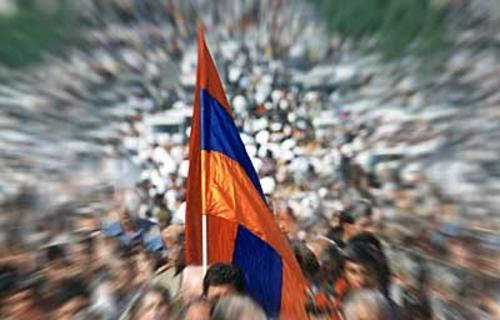
LAND AND DOLLAR DEMAND FROM ARMENIANS ARE ON THE WAY
-
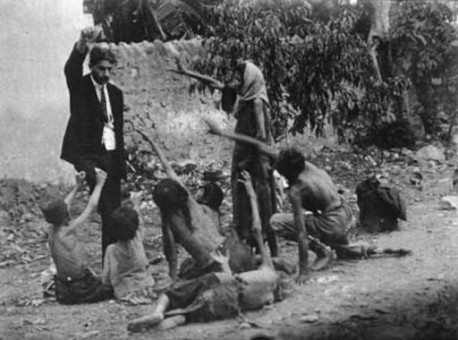
Armenia and Armenians in Int’l Treaties, Ann Arbor, Mar. 19-21
International Conference
Armenia and Armenians in International TreatiesUniversity of Michigan, Ann Arbor, March 19-21, 2009
Day 1 – Thursday, March 19, 2009 – Michigan Union (Anderson D)
Session I – 9:00-12:00
Dr. Levon Avdoyan, “Unintended Consequences: Three Ancient Treaties
and the Armenians” (63,299, 387 CE)
Prof. Robert H. Hewsen, “Armenia in the Treaty of Nisibis of 299 CE”
Prof. Seta B. Dadoyan,”From the ‘Medinan Oaths’ to the Shah’s
‘Compact’ for New Julfa-Isfahan: The Millennial Record of
Islamic-Armenian Protocols”
Prof. Johannes Preiser-Kapeller, “Armenian Aristocrats as Diplomatic
Partners of Eastern Roman Emperors, 387-884/885 AD”Session II – 2:00-5:00
Prof. Azat Bozoyan, “The Treaty of Deapolis (1107) as an Example of
the Byzantine Policy of ‘Divide and Rule’”
Prof. Claude Mutafian, “The International Treaties of the Last Kingdom
of Armenia”
Mr. Armen Kouyoumdjian, “When Madrid Was the Capital of Armenia”
Prof. Ali Kavani, “The Treaty of 1639 and its consequences for Armenia
and Armenians”Day 2 – Friday, March 20, 2009 – Michigan Union (Anderson D)
Session III – 9:00-12:00
Dr. Sebouh Aslanian, “Julfan Agreements with Foreign States and
Chartered Companies: Exploring the limits of Julfan Collective
Self-Representation in the Early Modern Age”
Prof. Kevork Bardakjian, “The National ‘Constitution’ of 1863: A
Dhimmi-Muslim Contract?”
Prof. Aram Yengoyan, “No War, No Peace: The Treaty of Brest Litovsk, 1918″
Prof. Richard Hovannisian,”The Unratified Treaty of Alexandropol as
the Basis for Subsequent Russian-Turkish-Armenian Relations”Session IV – 2:00-4:00
Dr. Fuat Dundar, “Diplomacy of Statistics: Discussing the Number of
Armenians during Diplomatic Negotiations (1878-1914)”
Dr. Vladimir Vardanyan, “Peace Treaties of Armenia and Relating to
Armenia: A Legal Analysis”
Prof. Dennis Papazian, “The Treaty of Lausanne”Day 3 – Saturday, March 21, 2009 – Michigan Union (Wolverine ABC)
Session V – 8:30-12:00
Dr. Lusine Taslakyan, “Armenia in International Environmental Conventions”
Mr. Emil Sanamyan, “The OSCE-CFE Treaty and Breaches in the
International Legal System: Armenia’s Predicament Today”
Mr. Rouben Shougarian, “Yielding More to Gain the Essential: The
Russo-Armenian Treaty of 1997”
Prof. Sevane Garibian, “From the 1915 Allied Declaration to the Treaty
of Sevres: The Legacy of the Armenian Genocide in International
Criminal Law”Session VI – 1:30-4:00
Prof. Keith Watenpaugh, “The League of Nations and the Formation of
Armenian Genocide Denial”
Pascual Ohanian, JD, “International Treaties in International Penal
Law Concerning Crimes Against Humanity: Applicability of the Juridical
Experience in Argentina and Chile to the Turkish-Ottoman State and
Turkish Republic for Acts Perpetrated from 1910 to 1923 and Beyond”
Prof. Catherine Kessedjian, “Beyond Treaties”Live webcast:
-
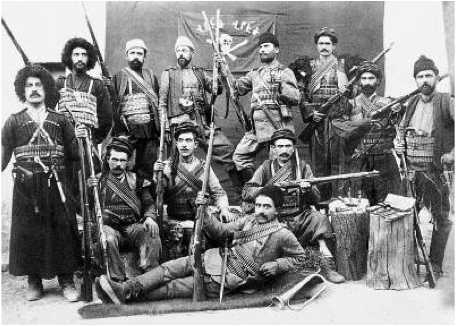
Armenian Studies at a Threshold Society for Armenian Studies
35th Anniversary Conference
March 26-28, 2009
University of California, Los AngelesSession 1. Thursday, 1:00-2:30 p.m.
Medieval Literature and the Arts
Theo van Lint, Oxford University, Chair* Andrea Scala, University of Milan, “About the Name of the Latin
Language in Classical Armenian”
* Robert Thomson, Oxford University, Emeritus, “Armenian Biblical
Commentaries: The Present State of Research”
* Sona Haroutyunian, Ca’ Foscari University of Venice, “Dante
Alighieri and the Mekhitarist School of Translation”Session 2. Thursday, 2:30-4:00 p.m.
Medieval History and Culture
Anne Elizabeth Redgate, Newcastle University, Chair* Sergio La Porta, Hebrew University of Jerusalem, “Cultural
Interaction and Cultural Strategies in Post-Seljuk Armenia”
* Sara Nur Yildiz, Bilgi University, Istanbul, “Competing for the
Il-Khan’s Favor: Seljuk and Armenian Rivalry in Thirteenth Century
Mongol-Dominated Anatolia”
* Tom Sinclair, University of Cyprus, “Coins, Trade, and Cities in
Greater Armenia during the Il-Khanid Period”Refreshments, 4:00-4:15 p.m.
Session 3. Thursday, 4:15.6:30 p.m.
Researching the Contemporary Armenian Diaspora: Consolidating the
Past, Situating the Future
Khachig Tölölyan, Wesleyan University, Chair* Sossie Kasbarian, Graduate Institute of International and
Development Studies, Geneva, “From Exile to Empowerment Reinvigorating
the Concept of Diaspora: The Armenian Case”
* Aida Boudjikanian, Montreal, “The Literature on the Armenian
Diaspora in France and Canada”
* Susan Pattie, University College London, “Twenty-First Century
Armenians: Is Anyone Paying Attention?”
* Anny Bakalian, City University of New York, “Still Alive and
Thriving: Assimilation and Identity among Armenian Americans in the
21st Century”
* Nelida Boulghourdjian, University of Buenos Aires, “Migration
Studies in Argentina: The Armenian Case”
* Discussant: Aram Yengoyan, University of California, DavisFriday, March 27, 2009, 1200 Rolfe Hall, 9 A.M. 9 P.M.
Session 4. Friday, 9:00 a.m.
Armenian History as Connected History
Houri Berberian, California State University-Long Beach, Chair* Sebouh Aslanian, University of Michigan-Ann Arbor, “From
‘Autonomous’ to ‘Interactive’ Histories: World History’s Challenge to
Armenian Studies”
* Peter Cowe, UCLA, “The Armenian Oikoumene of the 11th to 14th
Century in Search of a Holistic Discourse”
* Rachel Goshgarian, Zohrab Center, New York, “The Futuwwa and
Armenian History in the Late Medieval ‘Islamicate’ World of Anatolia”
* Elyse Semerdjian, Whitman College, “Morality, Communalism, and the
Armenians of Ottoman Aleppo”Refreshments, 11:00-11:15 a.m.
Session 5. Friday, 11:15 a.m.1:00 p.m.
Economy, Society, and Culture of Early Modern East Central Europe
(14th 19th Centuries)
George Bournoutian, Iona College, Chair* Andreas Helmedach, Center for the History and Culture of East
Central Europe (GWZO), Leipzig, “Armenian Minorities as Actors in
Early Modern Globalization”
* Bálint Kovács, Center for the History and Culture of East Central
Europe (GWZO), Leipzig, “Interregional Cultural Relations of the
Transylvanian Armenians in the 17th and 18th Centuries”
* Judit Pál, Babes-Bolyai-University, Cluj-Napoca, Romania, “The
Social and Economic History of the Armenians in Transylvania in the
18th and 19th Centuries”Lunch Recess, 1:00-1:45 p.m.
Session 6. Friday, 1:45-3:45 p.m.
Between Perversion and Representation: Sexual Allegories in Armenian Literature
Rubina Peroomian, UCLA, Chair and Discussant* Tamar Boyadjian, UCLA, “The Female City and Its Textual Function:
Grigor Tghay’s Lament over the City of Jerusalem”
* Talar Chahinian, UCLA, “The Crisis of Incest: Reconfiguring the
Catastrophe in Orpuni’s ‘Vartsu Seniag, ‘ Sarafian’s Ishkhanuhin, and
Shahnur’s ‘Buynuzlenere’”
* Myrna Douzjian, UCLA, “Challenging Social and Literary Norms:
Sexual Agency in Violet Grigorian’s Poetry”
* Lilit Keshishyan, UCLA, “Sexual Perversion as Political Allegory in
Gurgen Khanjian’s Hivandanots”Session 7. Friday, 4:00-6:00 p.m.
New Perspectives on The Armenian Genocide
George Shirinian, Zoryan Institute, Chair* Taner Akçam, Clark University, “Ottoman Documents and Genocidal
Intent of the Union and Progress Party”
* Janet Klein, University of Akron, “The Kurds and the Armenian
Genocide: Reflections on Historiography”
* Lerna Ekmekcio lu, New York University, “Approaching the Unlucky
Sister and Her Child: Sexual Violence as a Marker during and after the
Armenian Genocide”
* Vahram Shemmassian, California State University-Northridge, “The
Rescue of Captive Genocide Survivors, 1919-1921”Light Dinner Recess (on site), 6:00-7:00 p.m.
Session 8. Friday, 7:00-9:00 p.m.
Contemporary Armenia
Hovann Simonian, University of Southern California, Chair* Khatchik Der Ghougassian, Universidad de San Andrés, Buenos Aires,
“Market Fundamentalism, Economic Hardship, and Social Protest in Armenia”
* Konrad Siekierski, Adam Mickiewicz University, Poznan, Poland,
“Nation and Faith, Past and Present: The Contemporary Discourse of the
Armenian Apostolic Church in Armenia”
* Tamara Tonoyan, National Institute of Health, Yerevan, “HIV/AIDS in
Armenia: Migration as a Socio-Economic and Cultural Component of
Women’s Risk Settings”
* Anahid Keshishian-Aramouni, UCLA, “Inknagir Magazine: Frivolous
Iconoclasm or Marker of Artistic Liberty?”
* Gregory Areshian, UCLA, Pavel Avetisyan and Armine Hayrapetyan,
Institute of Archaeology and Ethnography, Yerevan, “Archaeology in
Post-Soviet Armenia: New Discoveries, Problems, and Perspectives”Session 9. Saturday, 9:00-10:30 a.m.
Discourse and Violence: Revisiting the Adana Massacres of 1909
Richard Hovannisian, UCLA, Chair* Ohannes Kiliçdagi, Bilgi University, Istanbul, “Ottomanism among
the Anatolian Armenians after the 1908 Revolution”
* Bedross Der Matossian, MIT, “From Verbal to Physical Violence:
Ihsan Fikri’s Itidal and the Massacres of Adana in 1909”
* Rubina Peroomian, UCLA, “The Poetics of Violence in Literary
Responses to the Adana Massacres”Session 10. Saturday, 10:30 a.m.12:45 p.m. The State of Armenian
Studies Chairs and Programs in the United States Marc Mamigonian,
NAASR, Chair (with comments on prehistory of Armenian programs)* Taner Akçam, Clark University
* Kevork Bardakjian, University of Michigan-Ann Arbor
* Peter Cowe, UCLA
* Richard Hrair Dekmejian, USC
* Barlow Der Mugrdechian, California State University-Fresno
* Roberta Ervine, St. Nersess Seminary
* Richard Hovannisian, UCLA
* Jirair Libaridian, University of Michigan-Ann Arbor
* Christina Maranci, Tufts University
* Simon Payaslian, Boston University
* Ara Sanjian, Armenian Research Center, UM-Dearborn
* Vahram Shemmassian, California State University-NorthridgeLunch Recess, 12:45-1:30 p.m.
Session 11. Saturday, 1:30-3:00 p.m.
Church Politics and Identity
Abraham Terian, St. Nersess Seminary, Chair* Paul Werth, University of Nevada, Las Vegas, “Rumors and Projects
of Ecclesiastical Union: Armenians, Orthodoxy, and the Problem of
Confessional Distinctions in Imperial Russia”
* Ara Sanjian, University of Michigan-Dearborn, “The British Foreign
Office, the Church of England, and the Crisis in the Armenian Church
at Antelias, 1956-1963”
* Marlen Eordegian, Vanderbilt University, “Straddling Religion and
Politics: The Case of the Armenian Patriarchate of Jerusalem”Session 12. Saturday, 3:15-5:45 p.m.
Armenians, World War II, and Repatriation
Barbara Merguerian, Armenian International Women’s Association, Chair* Vartan Matiossian, Hovnanian School, New Jersey, “‘White’
Armenians, ‘Aryan’ Armenians: Combating Racial Views during the First
Half of the 20th Century”
* Gregory Aftandilian, Washington, D.C., “World War II as an Enhancer
of Armenian-American Second Generation Identity”
* Levon Thomassian, California State University-Northridge, “Summer of ’42”
* Astrig Atamian, National Institute of Oriental Languages and
Civilizations, Paris, “Being an Armenian Communist in France during
the Cold War”
* Sevan Yousefian, UCLA, “The Formation of Soviet Armenian
Immigration Policy: Diaspora Networks, Armenian Cadres, and the
Postwar Repatriation Campaign”
* Joanne Laycock, University of Manchester, “‘Belongings’: People and
Possessions in the Armenian Repatriations, 1947-1949”Concluding Comments and Discussion, 5:45-6:00 p.m.
Architectural Exhibit by US Chapter of Armenian Architects Association
Conference Sponsors: Society for Armenian Studies UCLA Center for Near
Eastern Studies UCLA Center for European and Eurasian Studies USC
Institute of Armenian Studies National Association for Armenian
Studies and Researchand The Armenian Studies Programs of Armenian Center, Columbia
University Armenian Research Center, University of Michigan-Dearborn
California State University-Fresno California State
University-Northridge University of California, Los Angeles University
of Michigan-Ann ArborThirty-Fifth Anniversary Banquet, Taghlyan Center 1201 N. Vine Street,
Hollywood, California, 7:30 p.m.
Banquet Sponsor: Armenian Educational Foundation -

Darwin on Turks (Page 316) And Turks on Darwin:
RECORD: Darwin, Francis ed. 1887. The life and letters of Charles Darwin, including an autobiographical chapter. London: John Murray. Volume 1.
REVISION HISTORY: Scanned for Darwin Online 4.2006; transcribed (double key) by AEL Data 6.2006. Later corrections by John van Wyhe. RN4
NOTE: See R. B. Freeman’s bibliographical introduction.
The copy scanned was kindly lent by the Balfour and Newton Libraries, Cambridge. The copy scanned had been rebound; the images of the covers are taken from a copy of the 3rd edition (1887)lent by Janet Browne
alinakansu [[email protected]]
OOOOOOOOOOOOOOOOOOOOOOOOOOOOOOOOOOOO
<!– /* Style Definitions */ p.MsoNormal, li.MsoNormal, div.MsoNormal {mso-style-parent:””; margin:0in; margin-bottom:.0001pt; mso-pagination:widow-orphan; font-size:12.0pt; font-family:”Times New Roman”; mso-fareast-font-family:”Times New Roman”;} a:link, span.MsoHyperlink {color:blue; text-decoration:underline; text-underline:single;} a:visited, span.MsoHyperlinkFollowed {color:purple; text-decoration:underline; text-underline:single;} @page Section1 {size:8.5in 11.0in; margin:1.0in 1.25in 1.0in 1.25in; mso-header-margin:.5in; mso-footer-margin:.5in; mso-paper-source:0;} div.Section1 {page:Section1;} –>
And Turks on Darwin:
Southeastern European Times 13/03/2009
* Turkish scientific council draws criticism for censoring Darwin
Turkey’s top science and research agency came under strong criticism
Wednesday (March 11th) for ordering the removal of a cover story
on Charles Darwin from a state-run monthly magazine it publishes.The March issue of Bilim ve Teknik (Science and Technology) was
supposed to mark the 200th anniversary of the British scientist’s
birth and the 150th anniversary of his book on evolution, On the
Origin of Species. But under orders from the Scientific and
Technological Research Council of Turkey (TUBITAK), the magazine
scrapped the 16-page material on that theme at the last minute.Click for the rest…
Ahmet Toprak
-
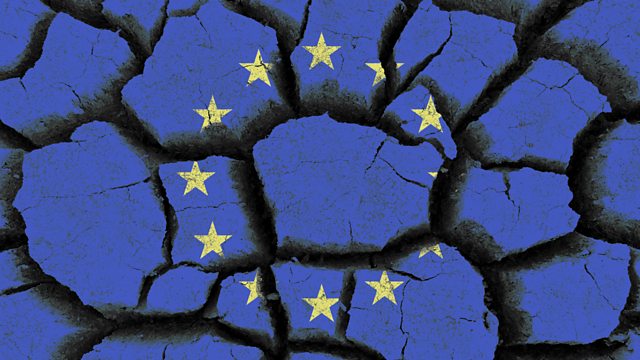
The Athenian Press on the Asia Minor Crisis
From: Georgia Eglezou <[email protected]>
List Editor: Mark Stein <[email protected]>
Editor’s Subject: H-TURK: New Book [G Eglezou]
Author’s Subject: H-TURK: New Book [G Eglezou]
Date Written: Tue, 3 Mar 2009 09:40:44 -0500
Date Posted: Tue, 3 Mar 2009 09:40:44 -0500Dear members, I would like to inform you about the publication of my new book: Georgia EGLEZOU, The Greek Media in World War I and its Aftermath: The Athenian Press on the Asia Minor Crisis Book details Hardcover: 288 pages Publisher: I B Tauris & Co Ltd (5 Feb 2009) Language English ISBN-10: 1845117875 ISBN-13: 978-1845117870 Book Dimensions: 21.8 x 14.4 x 2.8 cm Summary The Asia Minor Campaign remains one of the most disastrous episodes of modern Greek history. The retreat of the Greek army after being routed by Turkish nationalist forces in Anatolia in 1922 was a catastrophic event. Yet, as this study of Athenian newspapers from 1919 to 1922 makes apparent, the bulk of the Greek press created the illusion that all was well at the front and hid the reality of impending disaster. Here Eglezou presents these familiar events through a dramatic new perspective: the role and content of the Athenian press as a means of propaganda. The reporting of the pro- and anti-government press is closely rendered to provide fascinating insights into why a delusory policy was pursued to the bitter end. With a comprehensive account of the Campaign, Eglezou adds a new dimension to our understanding of the history of modern Greece, as well as the relationship between the press and politics more generally. Dr Georgia Eglezou Media School Bournemouth University
-
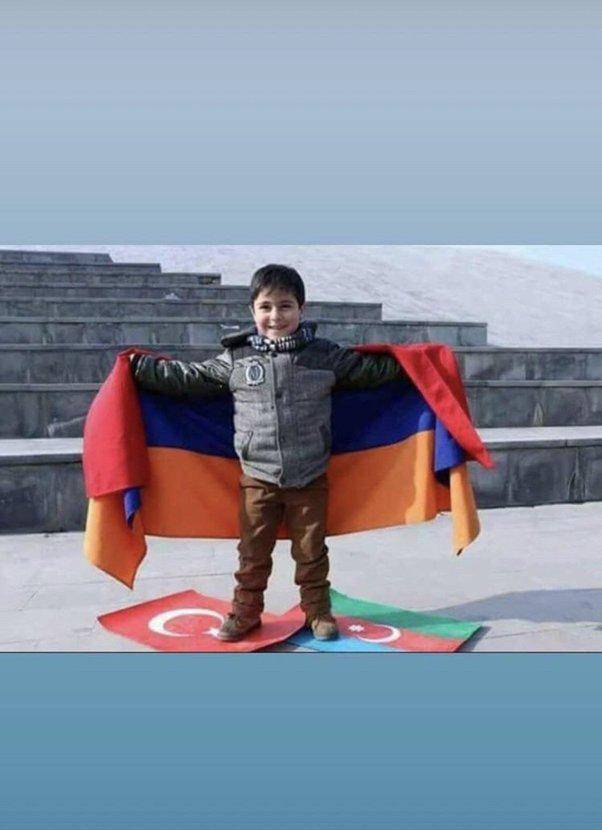
ARMENİAN LIE
SÖZDE ERMENİ SOYKIRIMI
ERMENİ YALANLARI GÜN YÜZÜNE ÇIKIYOR 23Oca
ARMENİAN LIE
HABERİ YAZAN: admin ARMENİAN LIE
YORUM EKLE
As a bridge between Asia and Europe, with its straits connecting The Black Sea with the Mediterranean and its geopolitical situation at a point where the Central Asian, Caucasian and Middle Eastern natural energy sources intersect, Turkey draws the attention of the entire world.
The Ottoman Empire in the past and Turkey at present has always been an arena for which intrigues were incessantly designed. The colonialist superpowers wishing to eradicate the Ottoman Empire from the world by dividing it did not fail to use in their schemes also the Armenians who coexisted in peace with the Turks for so many centuries.
There are today just like in the past, several countries striving to secure themselves political and economic benefits at the expense of Armenian community. Monuments accusing Turks and Turkey of having committed genocide are being erected in some countries; decisions intending to recognise the so called genocide are brought into the parliamentary agenda in several countries and even voted for in some others. Issues that need to be left to historians are turned into means of self interest by the politicians.
The Armenians who were ousted from one place to the other, pushed into wars, and treated as third rate citizens throughout the history by the Romans, Persians and Byzantines. After the advent of Turks into Anatolia, they benefited from the just, humane, tolerant and unifying traditions and beliefs of their new neighbours. The period that lasted until the end of the nineteenth century when the apogee of these developments and relations was attained, was the golden age of Armenians. In fact, the Armenians were by far the greatest beneficiaries of the opportunities offered by the Ottoman Empire to all industrious, capable, honest and straightforward citizens of the non-Moslem communities. Being exempted from the military service and to a large extent from taxation, they had the opportunity to excel themselves in trade, agriculture, craftsmanship and administration and therefore were rightly called the loyal nation because of their loyalty and ability to interact with the Ottomans. There were so many Armenians who spoke Turkish, who even conducted their rites in this language , who rose to topmost public service posts such as the Ministries and Under-Secretariats of State for the Public Works, Navy, Foreign Affairs, Finance, Treasury, Posts and Telegraph and Minting. There were some who even wrote books in Turkish and foreign languages on the Problems of the Ottoman Empire .
With the start of the decline of the Ottoman Empire, the European powers began to intervene in its affairs and degeneration became evident in the peaceful Turkish-Armenian relations. Great effort was displayed by the instigators whom the Western powers planted into the Ottoman Empire under clerical guise, to create a schism between Turks and Armenians in the religious, cultural, commercial, political and social fields. Thus, bloody clashes arose, in which the blunt of pain was borne by the Turks, and thousands of Armenians and Turks lost their lives in the revolts that broke out in Eastern Anatolia and spread all the way to Istanbul.
Though there were many Armenians fighting in the Ottoman armies against the enemy or serving in the rear ranks during the World War I, a considerable number had sided with the foes on the battlefronts and launched massacres against the population without distinction of women, children and the aged. Their toll was hundreds of thousands of Moslems and ruin in Eastern Anatolia.
The measures adopted by the Ottoman Empire to stop this violence were presented to the rest of the world under a completely different light and the Armenians, misguided by the promises and instigation of the Western Powers started to undermine the country where they had led a privileged life more than a thousand years.
The Hinchak, Tashnak, Toward Armenia, Young Armenians, Union and Salvation, Ramgavar, Paramilitaries, Black Cross societies and Hinchak Revolutionary Committee, which were established out of Anatolia, formed organisations urging the people for an armed revolt. These activities were the bloody uprisings that cost thousands of Turkish and Armenian lives.
During World War I, the Ottoman Empire was fighting against Russian armies in Eastern Anatolia, where the Armenian revolt was at its peak; and also against Armenian forces which supported the Russians. On the other hand, behind the lines it had to continue to fight against Armenian guerrillas that were burning Turkish villages and towns and attacking military convoys and reinforcements. In spite of this violence, the Ottoman Empire tried to solve the Armenian problem for months by taking local measures. Meanwhile, an operation was made against the Armenian guerillas and 2345 rebels were arrested for high treason. When it became evident that the Armenian community was also in rebellion against the state, the Ottoman Empire proceeded with the last resort of replacing only those Armenians in the region who actively participated in the rebellion. With this measure, the Ottoman Empire also intended to save the lives of the Armenians who were living in a medium of civil war because Turks started to counter-attack the Armenians who had performed bloody atrocities against Turkish communities.
Today, Armenia and some states using Armenians for their economic and political benefits have launched a massive propaganda campaign to present the replacement decision and the 24 April arrests as genocide to the world public opinion.
At the end of the World War I, when the armies of Allied States occupied The Ottoman Empire and the British officials among them arrested 143 Ottoman political and military leaders and intellectuals for having committed war crimes toward Armenians and exiled them to Malta where a trial was launched. However, the massive scrutiny made on the Ottoman, British, American archives in order to find evidence to incriminate these 143 persons failed to produce even the least iota of proof against them. In the end, the detainees in Malta were released without trial and even any indictment in 1922.
The United States archives contain an interesting document sent to Lord Curzon on 13 July 1921 by Mr. R.C. Craigie, the British Ambassador in Washington. The message was as follows: I regret to state that there is nothing that may be used as evidence against the Turkish detainees in Malta. There are no events that may constitute adequate proofs. The said reports do not appear to contain even circumstantial evidence that could be useful to reinforce the information held by His Majesty’s Government against the Turks.
On 29 July 1921, the legal advisers in London decided that the intended indictments drawn up against the persons on the British Foreign Ministry’s list were semi-political in nature and therefore these individuals should be treated separately from the Turks detained as criminals of war.
They also stated the following: No statements were hitherto received from the witnesses to the effect that the indictments intended against the detainees are correct. Likewise it does not need to be restated that finding witnesses after so long a time is highly doubtful in a remote country like Armenia which is accessible only with great difficulties. This statement was made also by none other than the legal advisers in London of His Majesty’s Government.
Yet, the efforts to smear the image of Turks with genocide claims did not come to an end as the British press published certain documents attempting to prove the existence of a massacre claimed to have been perpetrated by the Ottoman Empire while efforts were being made to start a lawsuit in Malta. It was stated that the documents were found by the British occupation forces in Syria, led by General Allenby. The inquiries subsequently made by the British Foreign Office revealed, however, that these documents were fakes prepared by the Armenian Nationalist Delegation in Paris and distributed to the Allied representatives.
The Armenian Diaspora, who left no stone unturned to keep the genocide claims on the agenda despite all these facts, resorted to terrorism in the end. The so-called Armenian issue, which started to attract the attention of the world and Turkish public opinion through the smearing campaign launched by the Armenians against Turkey after 1965, in the 70s turned into terrorist attacks directed against the Turkish representations abroad. In Santa Barbara on January 27, 1973, the first individual terrorist attack was launched by an aged Armenian named Gurgen (Karekin) Yanikian. He murdered Mehmet Baydur and Bahadir Demir, the Turkish Consul General and Vice Consul in Los Angeles, and these murders turned into an organised campaign after 1975. The attacks against Turkish embassies, officials and institutions abroad gradually intensified.
A major increase in the attacks was noted after 1979 when an internal unease started in Turkey. The Armenian terrorists staged a total of 110 attacks at 38 cities of 21 countries. 39 of these acts were committed by small arms, 70 of them were realised by bombs and one was an outright occupation. 42 Turkish diplomats and 4 foreigners were killed and 15 Turks and 66 foreigners were wounded in these incidents.
As these actions received a strong reaction from the world public opinion, the Armenian terrorist organisations changed their tactics in 1980 and began to co-operate with the PKK terrorist group which was pushed into the scene by the Eruh and ªemdinli attacks as the ASALA and Armenian operations were stopped. The documents and evidence from Beqaa and Zeli camps show that the PKK and ASALA militants were trained there together.
The success achieved by the Turkish security forces made the Armenian terrorism pursue the so called genocide claims through the Armenian Diaspora and attempt to make the world believe in the existence of such an event by inducing several parliaments to adopt resolutions and laws which recognise it.
The goal of these terrorists is to plant into minds of people the existence of a genocide, to force Turkey to recognise it, to receive indemnity from Turkey and, finally, to snatch from Turkey the land needed for realising the dream of Great Armenia
(http://www.ermenisorunu.gen.tr)
Tags: armenian genocide, ARMENİAN LIE, ottoman Empire
BU HABER on Cuma, Ocak 23rd, 2009 at 11:30DÜZENLENDİ VE DOSYA ARMENİAN LIE‘e KAYDEDİLDİ. You can follow any responses to this entry through the RSS 2.0 feed. You can leave a response, or trackback from your own site.
